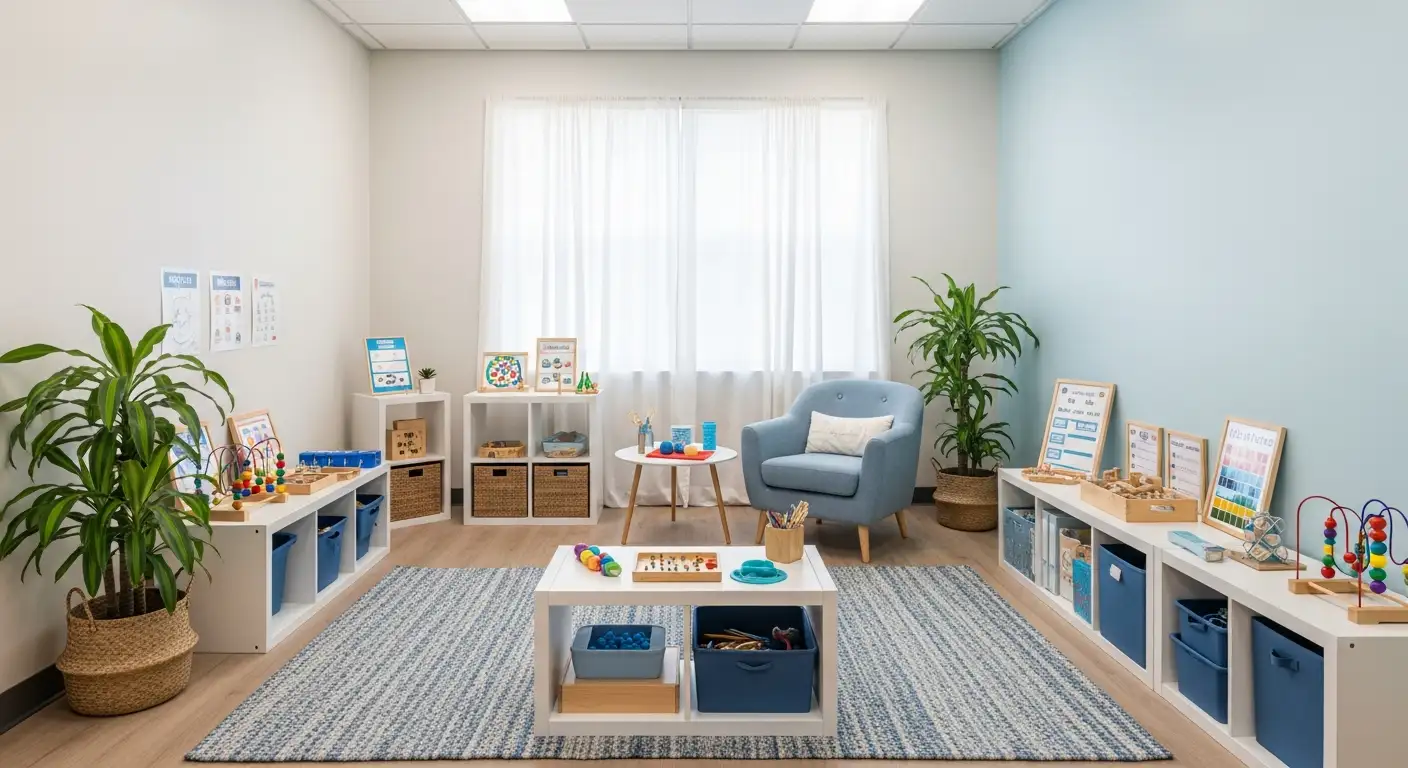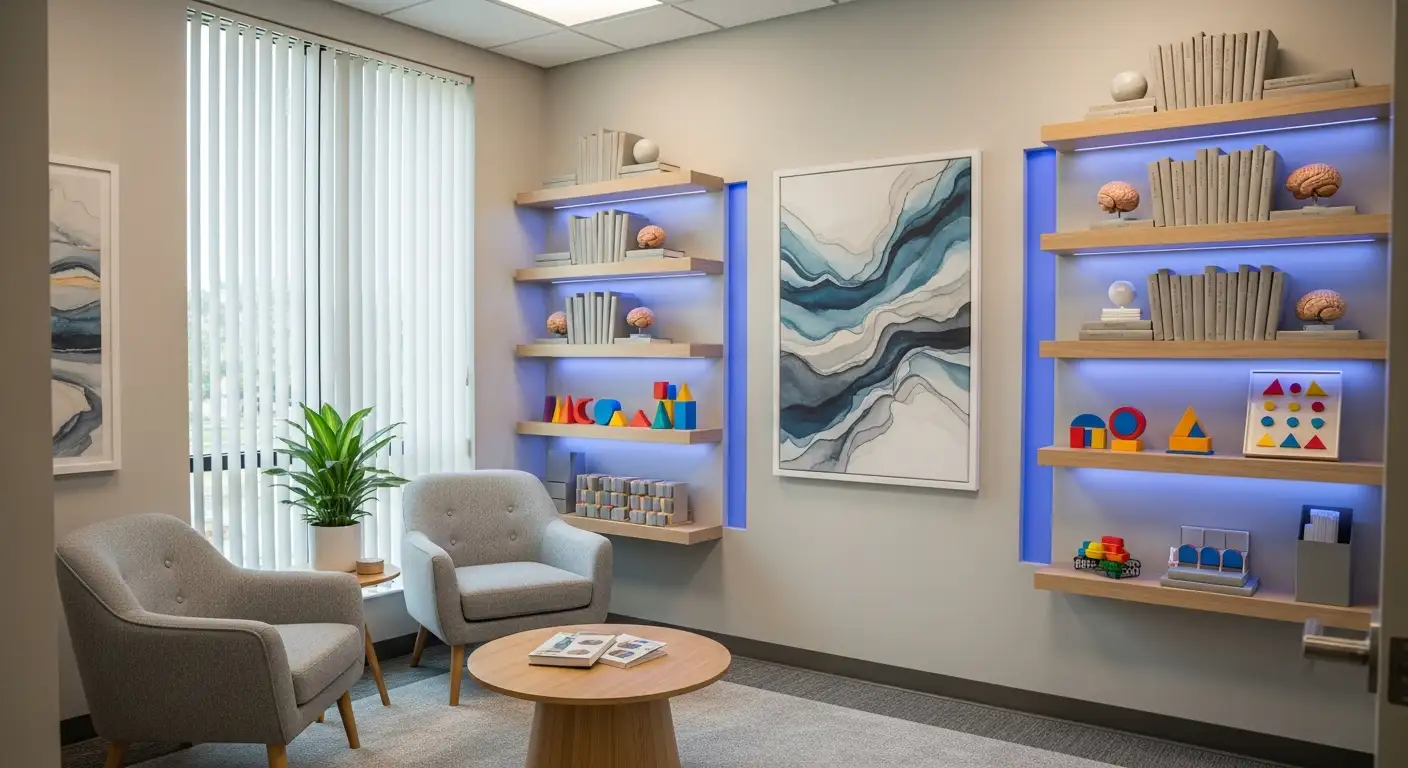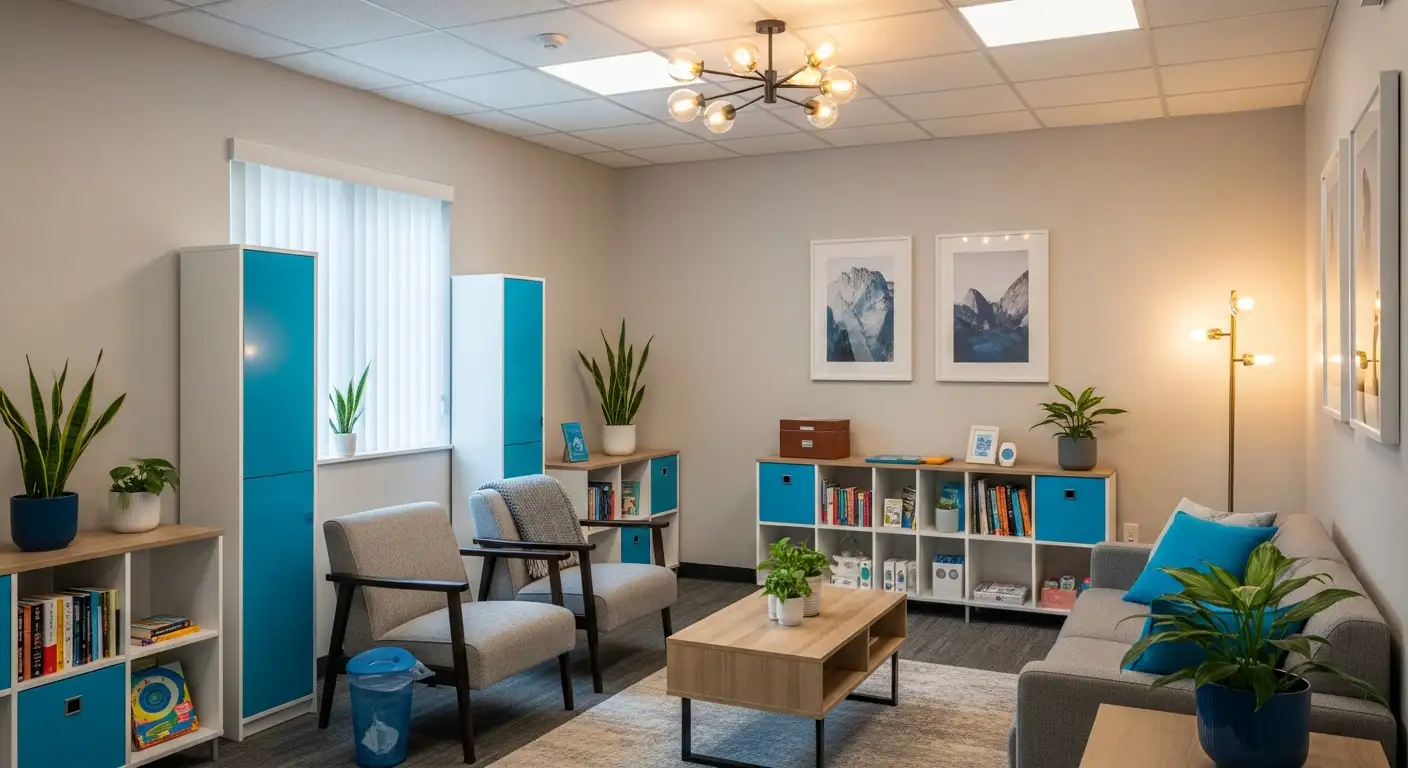How to Promote Generalization of Skills Across Settings with ABA Therapy

Understanding the Foundations of Generalization in ABA
In applied behavior analysis (ABA), the ultimate goal extends beyond teaching skills within structured therapy sessions; it aims to enable individuals to adapt and apply learned behaviors across diverse real-world environments. This process, known as generalization, is essential for fostering independence and functional living. By understanding key concepts and employing targeted strategies, practitioners, caregivers, and educators can work together to promote seamless transfer of skills across various settings, settings, and situations.
Core Concepts of Generalization in ABA

What concepts related to generalization are important in ABA?
In Applied Behavior Analysis (ABA), understanding how learned skills transfer to various real-world contexts is fundamental. The process of generalization ensures that behaviors mastered during therapy are exhibited across different settings, with different people, and in various situations. There are three main types of generalization that are particularly important:
| Type of Generalization | Description | Example |
|---|---|---|
| Stimulus Generalization | Applying a learned skill to different stimuli or environments. | A child who learns to say "thank you" in therapy then uses it at the grocery store with a different cashier. |
| Response Generalization | Using similar responses to achieve the same goal in varied situations. | Zipping up different pieces of clothing after learning to zip a jacket in therapy. |
| Skill Maintenance | Retaining skills over time and in different settings. | Remembering how to brush teeth correctly months after initial teaching. |
Promoting effective generalization involves deliberate strategies. Teachers and caregivers are encouraged to teach skills across various settings and with diverse stimuli. Incorporating naturalistic teaching methods such as incidental teaching or play-based interventions helps embed skills in everyday routines.
Caregiver and educator involvement is essential—they reinforce learning in natural contexts, helping behaviors become consistent parts of daily life.
Additional techniques include gradually reducing prompts, encouraging peer interactions, and developing specific generalization plans. These plans typically identify target skills, set clear criteria for success, and embed these skills into natural routines. Regular data collection, progress reviews, and collaboration among professionals, caregivers, and educators are crucial for ensuring skills are applied and maintained successfully.
Overcoming barriers like stimulus overselectivity and ensuring behaviors are demonstrated across varied stimuli fosters lasting, functional behavior change. When well-implemented, these approaches multiply the chances that learned behaviors will be used naturally—enhancing independence, social skills, and quality of life for individuals in ABA programs.
Types and Examples of Generalization

What concepts related to generalization are important in ABA?
In applied behavior analysis (ABA), understanding different types of generalization is essential for promoting the effective transfer of skills. These include stimulus generalization, response generalization, and maintenance, each playing a vital role in helping children apply learned behaviors across various contexts.
Stimulus Generalization
Stimulus generalization occurs when a child applies a learned skill to new and different stimuli. This can involve different environments, people, or similar but not identical stimuli. For example, if a child learns to say "hello" when greeted by their mother, stimulus generalization would be exhibiting the same greeting when approached by a teacher or other family members.
Strategies such as training loosely, using varied materials, and practicing in different settings promote stimulus generalization. This ensures skills are not limited to the initial teaching context.
Response Generalization
Response generalization involves a child performing different but related responses to achieve the same goal. For example, if a child learns to zip up different types of clothing, response generalization allows them to zip coats, jackets, or bags, even if each has a different zipper or fabric.
This variation helps children adapt learned responses to real-world situations, increasing independence and flexibility in their behaviors.
Time Generalization
Time generalization refers to the retention of skills over time, regardless of changing circumstances. For instance, a child who learns to wash their hands may continue to do so correctly weeks or months later, in different settings, without additional prompting.
Maintaining skills over time often involves reinforcement, repetition, and practicing in natural routines, making sure behaviors stick beyond initial training.
Response examples in daily life
Understanding these types of generalization can help caregivers and educators develop practical strategies. Examples include:
| Type of Generalization | Daily Life Example | How to Promote |
|---|---|---|
| Stimulus Generalization | Greeting different people with "hello" | Practice greetings with multiple individuals, in various environments |
| Response Generalization | Using zippers on different clothing | Teach zipping on various jackets, backpacks, and shoes |
| Time Generalization | Retaining potty training skills | Repeated practice, reinforcement over weeks, incorporating routines |
Applying these strategies ensures skills learned in therapy are useful across everyday settings, improving the child's independence and overall functioning.
Strategies to Promote and Support Generalization

How can ABA practitioners plan and implement skill generalization?
Planning for skill generalization is a fundamental aspect of effective ABA therapy. Practitioners begin by teaching skills across multiple settings, ensuring children experience varied environments such as home, school, and community. Using diverse materials and stimuli helps the child understand that skills are applicable in different contexts.
Involving multiple people, such as caregivers, teachers, and peers, provides natural opportunities for practicing behaviors across various interactions. Naturalistic teaching methods, like incidental teaching and embedding learning into play routines, make skill transfer more seamless. Also, systematically fading prompts gradually encourages independence, allowing the child to perform skills with less assistance.
Regular data collection and progress monitoring are vital for adjusting intervention plans and confirming that skills are generalizing beyond the therapy setting.
What are effective strategies and techniques to promote generalization of skills learned through ABA therapy across different settings?
Effective strategies include:
- Programming with multiple stimuli: Introducing varied materials and settings to teach skills.
- Teaching in different environments: Ensuring mastery in a structured therapy room and gradually expanding to natural settings.
- Involving many caregivers: Training parents, teachers, and others to reinforce skills.
- Fading prompts: Gradually reducing cues to foster independent use of skills.
These strategies help children carry over learned behaviors into everyday life. Incorporating naturalistic teaching techniques, such as incidental teaching and embedded instruction, aligns learning with real-world routines. This approach enhances motivation and relevance, promoting consistent application across different situations.
Additional Techniques for Successful Generalization
Creating specific generalization plans is essential. These plans identify natural environments, different stimuli, and relevant people, embedding skills into routine activities. Consistent reinforcement of generalized behaviors solidifies their use.
Collaboration among ABA professionals, family members, and educators plays a critical role. It ensures a unified approach, consistent reinforcement, and ongoing assessment of progress.
Monitoring success involves collecting data across settings, conducting probe sessions, and gathering feedback from caregivers. Flexibility in adjusting strategies based on this data maximizes the likelihood of skills becoming part of the individual's regular repertoire.
In summary, a combination of teaching in multiple settings, promoting independence through prompt fading, involving various people, and applying naturalistic methods strongly supports the generalization of ABA skills, leading to meaningful skill transfer and long-term success.
The Role of Caregiver and Educator Collaboration
 Recognizing the importance of involving caregivers and educators is vital to promote effective generalization of skills in ABA therapy. Involving caregivers early in the process helps ensure that learned behaviors are reinforced consistently across various settings, such as home and community environments.
Recognizing the importance of involving caregivers and educators is vital to promote effective generalization of skills in ABA therapy. Involving caregivers early in the process helps ensure that learned behaviors are reinforced consistently across various settings, such as home and community environments.
Training school staff is also crucial. Educators equipped with basic ABA strategies and an understanding of a child's individualized plan can better support skill transfer during classroom activities. This collaboration creates a unified approach, making generalization seamless and more natural for the learner.
Providing consistency between settings involves developing specific generalization plans that include embedding skills into real-life routines. These plans often involve multiple individuals practicing skills in different contexts, which helps the child see the relevance and application of their new abilities.
Utilizing feedback from caregivers and teachers is an ongoing process. Regular communication allows therapists to adjust intervention strategies based on real-world observations, ensuring the child's progress is continuous and meaningful. Feedback can include data on skill performance, behavioral responses, and environmental factors influencing learning.
Effective collaboration also involves establishing regular meetings and providing tools such as homework calendars, progress reports, and coaching sessions. These strategies foster a supportive network working toward the shared goal of skill generalization.
Progress monitoring is integral. It relies on continuous data collection from various sources to assess whether the child can perform skills independently outside of therapy. Use of formal assessments, natural environment observations, and informal feedback helps identify areas needing explicit focus.
Overall, teamwork among ABA professionals, caregivers, and educators builds a stable foundation for the child's success in applying learned skills across diverse contexts, enhancing their independence and social competence.
The Benefits and Long-Term Impact of Generalization
What concepts related to generalization are important in ABA?
In ABA, important concepts related to generalization include stimulus generalization, response generalization, and maintenance. Stimulus generalization involves applying learned skills across different environments, stimuli, and people. Response generalization refers to the ability to use related behaviors to achieve a similar goal, even if the exact response is not taught directly. Maintenance pertains to retaining skills over time and across various settings.
Promoting these types of generalization ensures that skills are not only learned but also effectively transferred to real-world situations. This transfer increases the likelihood that behaviors will be useful in daily life and helps children with autism integrate more fully into their community.
Why is generalization important in ABA?
Generalization plays a critical role in making therapy effective long-term. It helps children apply their skills outside of structured sessions, such as at home, school, or in community settings.
Long-term skill retention
One of the significant benefits of generalization is the better retention of skills over time. Using strategies like repeated practice, reinforcement, and natural routines encourages children to maintain their skills beyond initial learning.
Independence and confidence
As children successfully apply skills across various settings, their independence and self-confidence grow. These traits lead to enhanced autonomy and a greater sense of self-efficacy.
Social interactions and behavior recalibration
Effective generalization also improves social interactions. Children learn appropriate behaviors in different contexts, which supports healthier relationships and reduces problem behaviors.
How does promoting generalization work?
Practitioners and caregivers collaborate to teach skills in multiple environments, involving diverse stimuli and people. Incorporating naturalistic teaching methods like incidental teaching or play-based sessions helps embed skills into everyday routines.
Monitoring progress through data collection and feedback from caregivers ensures that interventions are adapted as needed, further supporting the long-term success of generalization.
| Concept | Description | Practical Application |
|---|---|---|
| Stimulus Generalization | Applying skills across different stimuli or environments | Using varied toys, settings, and materials during training |
| Response Generalization | Using different but related responses to achieve the same goal | Teaching children to zip different types of clothing |
| Skill Maintenance | Retaining skills over time and in different contexts | Repetition, reinforcement, and ongoing practice |
Understanding and applying these concepts ensures that ABA therapy yields meaningful, lasting improvements, empowering children with autism to thrive across all areas of their life.
Integrating Multiple Teaching Approaches for Optimal Generalization
How can ABA practitioners plan and implement skill generalization?
Planning for skill generalization is a critical part of effective ABA therapy. It involves intentionally teaching skills across multiple settings, with different people, and using various materials to ensure that the learned behaviors are transferable beyond the therapy environment.
Incorporating naturalistic teaching methods, like incidental teaching and embedded instruction, allows children to practice skills in real-life contexts, which enhances their applicability. Systematically fading prompts over time fosters independence, encouraging children to perform skills without constant adult support.
Another essential aspect is creating specific generalization plans. These include identifying target skills, defining success criteria, and embedding these skills into everyday routines to ensure they are used consistently.
Monitoring progress through data collection and regular reviews is vital to assess whether skills are transferring appropriately. Collaboration with caregivers and educators further supports this process, as they can reinforce skills across different environments.
Why are naturalistic and structured methods both important?
Using a combination of naturalistic and structured teaching strategies maximizes the potential for generalization. Structured methods, such as discrete trial training, provide clear, focused learning opportunities.
Meanwhile, naturalistic approaches, like play-based and incidental teaching, promote the application of skills in natural settings where children are more likely to use them during daily activities.
Striking a balance between these methods allows ABA programs to be flexible and responsive to each child's needs, increasing the likelihood that skills learned in therapy translate into real-world environments.
How do sequential teaching strategies support generalization?
Sequential teaching strategies involve gradual progression through teaching steps, starting with highly structured practices and moving toward more natural, less prompted environments.
This method helps solidify skills within a controlled context before encouraging application across various settings and stimuli. It also ensures that children are not overwhelmed and have mastered foundational skills before generalizing them.
By systematically increasing the complexity and variability of teaching conditions, ABA practitioners can promote more robust generalization, making skills resilient over time and across different situations.
Approaches to make generalization successful
To maximize effectiveness, practitioners should develop individualized generalization plans that are tailored to each child's unique needs.
Programs should incorporate:
- Teaching skills in multiple settings, such as home, school, and community.
- Involving a variety of caregivers and educators in practice sessions.
- Using natural routines and open-ended activities.
- Gradually fading prompts to foster independence.
- Embedding skills into daily life and routines.
Through consistent practice and reinforcement across all these domains, children are more likely to carry skills across different environments seamlessly.
Fostering Long-lasting and Broad Skill Application in ABA
In conclusion, promoting effective generalization in ABA requires a multifaceted approach that combines explicit teaching strategies, naturalistic methods, caregiver collaboration, and ongoing monitoring. By deliberately designing intervention plans that incorporate diverse stimuli, settings, and social partners, practitioners can facilitate the transfer and maintenance of skills across real-world environments. This comprehensive focus not only enhances the child's independence and confidence but also ensures that learned behaviors are durable and functionally relevant, ultimately leading to improved long-term outcomes and greater quality of life.
References
- Strategies for Generalizing ABA Skills Across Settings
- What is Generalization And How to Implement it in ABA - Motivity
- Generalization: An ABA Technique - Golden Care Therapy
- Generalization: The Key to Meaningful Programming in ABA
- How to Promote the Generalization of Skills in ABA Therapy
- 7 Real-World ABA Therapy Examples, Activities & Their Benefits
- ABA Therapy and Life Skills for Everyday Independence
Recent articles

ABA Therapy For Building Self-Regulation And Coping Skills
Harnessing ABA Therapy to Empower Emotional and Behavioral Mastery in Autism

ABA Therapy For Building Skills In Independent Decision Making
Empowering Autistic Individuals Through ABA: A Pathway to Autonomy

Collaborative Communication Between Therapists and Families
Building Bridges: The Essential Role of Collaboration in Autism Therapy

How ABA Helps Develop Adaptive Behavior Skills Over Time
Unlocking Independence: The Role of ABA in Building Adaptive Skills

The Role of Parent Priorities in Designing ABA Goals
Collaborative Goal-Setting: Aligning ABA Therapy with Family Priorities

Translating ABA Goals into Everyday Functional Skills
Bridging Theory and Practice: How ABA Therapy Enhances Daily Life for Individuals with Autism



